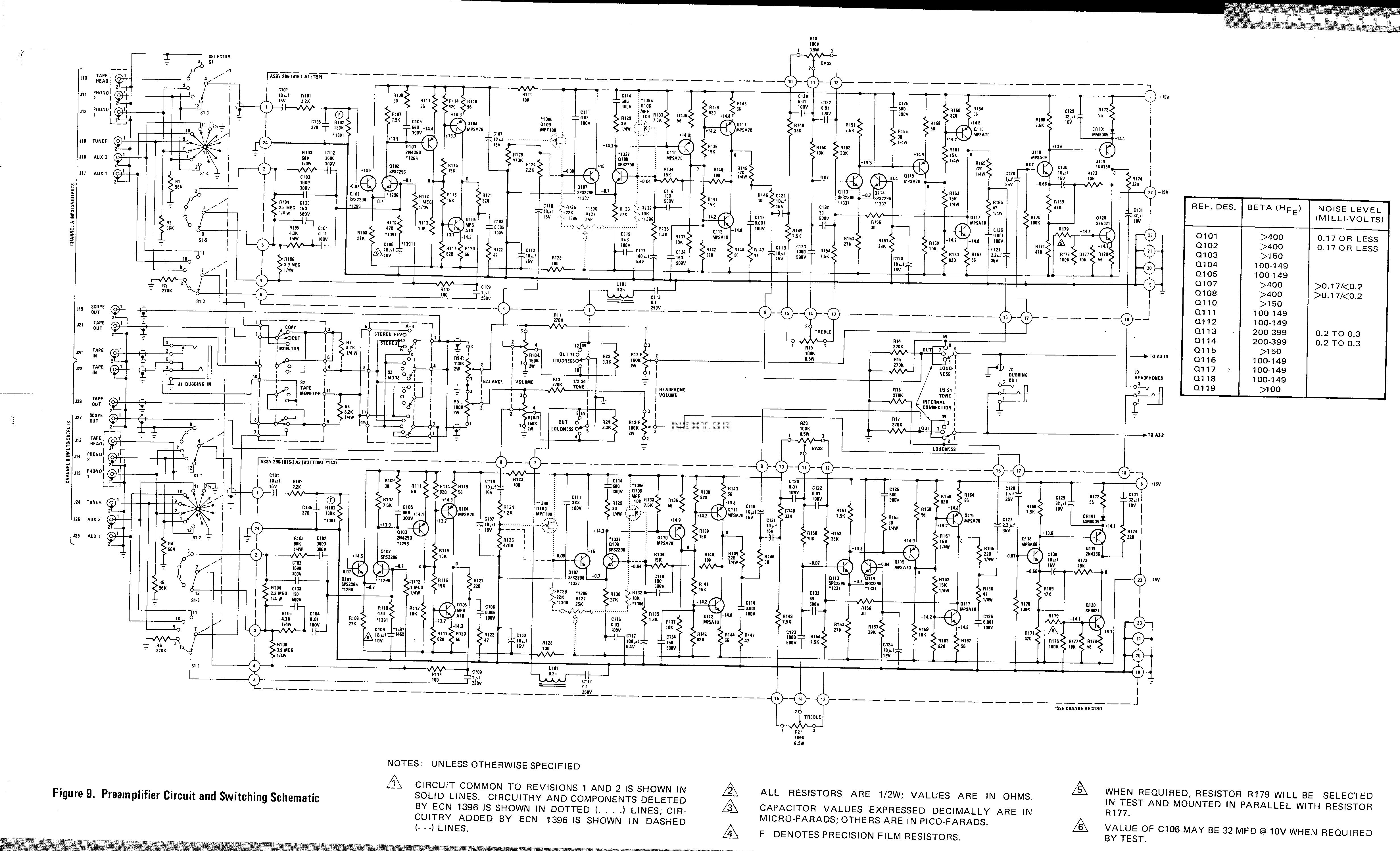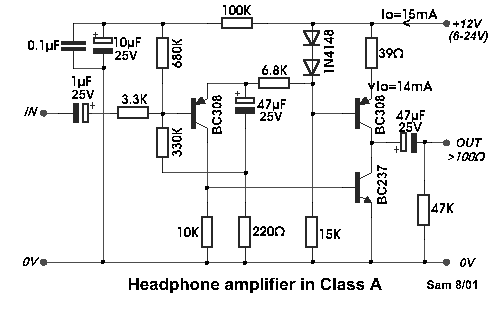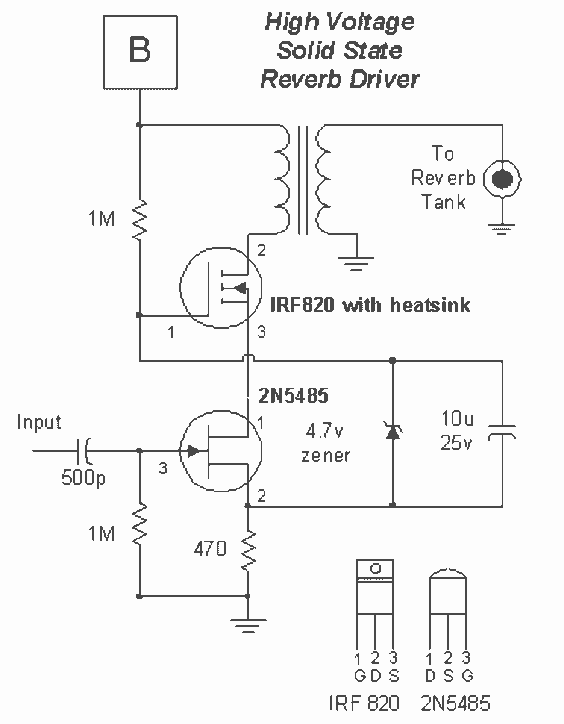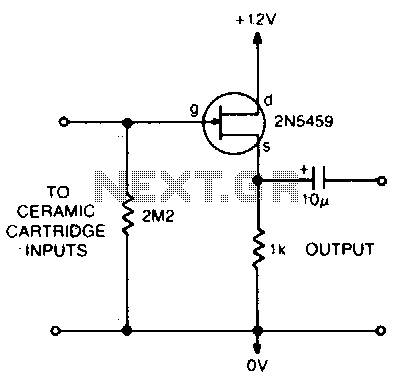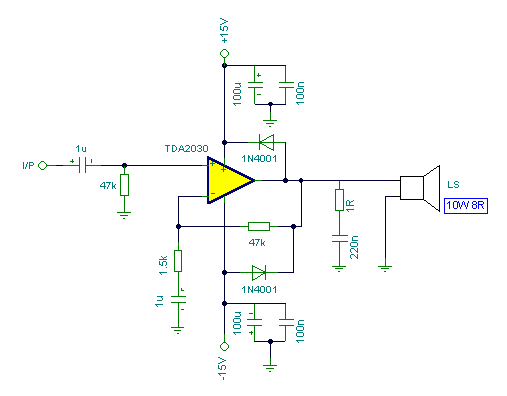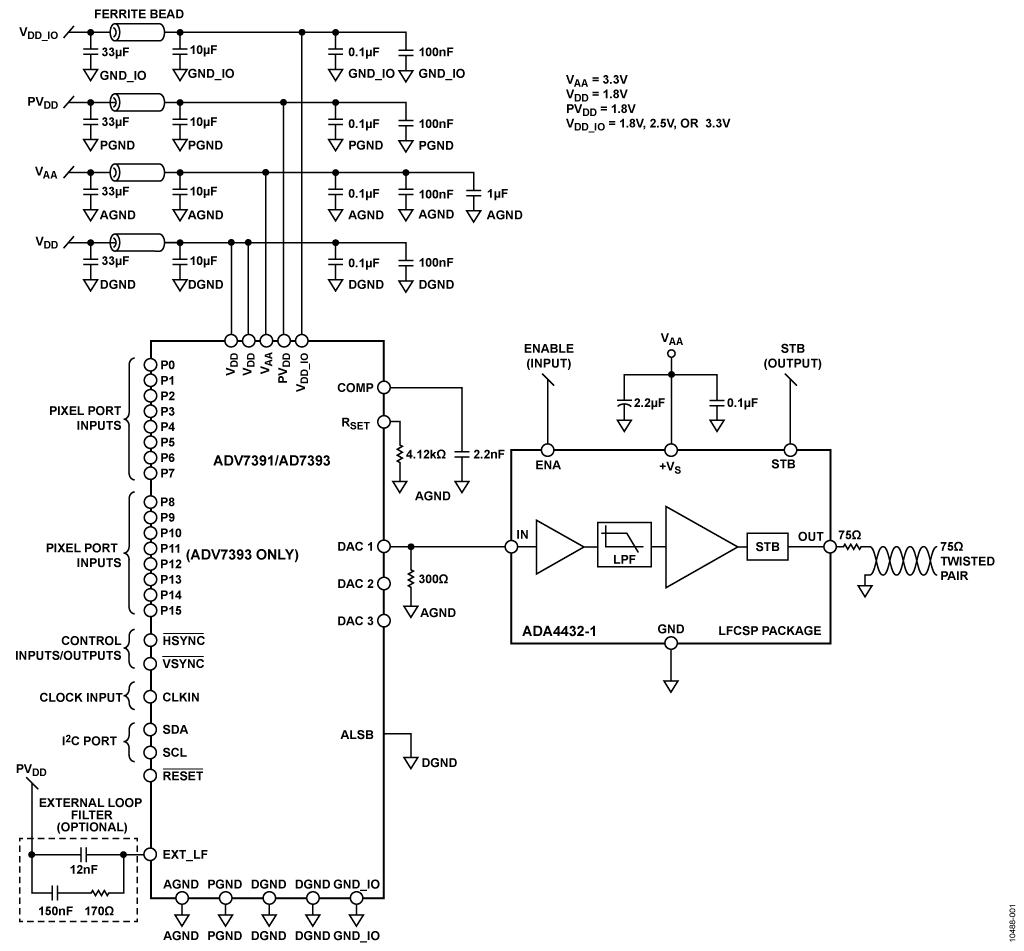
Video Amplifier
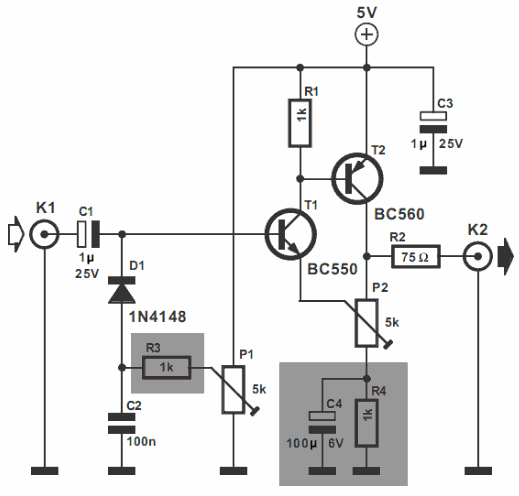
The video amplifier illustrated in the diagram represents a well-established design that is simple yet highly effective. However, there is a risk of damaging the transistors if the potentiometers, which control black level and signal amplitude, are set to their extreme positions. This issue can be mitigated by incorporating two resistors. In the original design, if resistors R3 and R4 were directly connected and potentiometer P1 was fully clockwise while P2 was fully anticlockwise, an excessively high base current would flow through transistor T1, potentially leading to its failure. Additionally, with the wiper of P2 grounded, the base current of transistor T2 could reach dangerously high levels. The inclusion of resistors R3 and R4 provides adequate protection against these risks by limiting the base currents to a maximum of 5 mA. Furthermore, shunt capacitor C4 ensures that resistor R4 does not adversely affect the amplification.
The video amplifier circuit operates by amplifying video signals for various applications. The design features two key potentiometers: P1, which adjusts the black level, and P2, which modulates the signal amplitude. The risk of transistor failure arises primarily from the potential for excessive current flow when these potentiometers are set to their extremes. Transistor T1 serves as the primary amplification stage, while T2 acts as a secondary stage for further signal processing.
To enhance the robustness of the circuit, resistors R3 and R4 are strategically placed to limit the base current entering T1 and T2, respectively. These resistors function as current limiters, ensuring that the base currents do not exceed 5 mA, thereby protecting the transistors from damage due to overcurrent conditions. The addition of these resistors not only safeguards the components but also contributes to the overall stability of the amplifier.
The shunt capacitor C4 plays a critical role in maintaining the performance of the amplifier. It is connected in parallel with R4 and serves to bypass high-frequency noise, ensuring that the amplification process remains unaffected by unwanted signals. This configuration allows for a cleaner output signal while preserving the integrity of the amplification process.
Overall, the video amplifier circuit exemplifies a balance between simplicity and functionality. The careful consideration of component placement and the inclusion of protective elements like resistors and capacitors contribute to a reliable and effective video amplification solution.The video amplifier in the diagram is a well-known design. Simple, yet very useful, were it not for the ease with which the transistors can be damaged if the potentiometers (black level and signal amplitude) are in their extreme position. Fortunately, this can be obviated by the addition of two resistors. If in the diagram R3 and R4 were direct co nnections, as in the original design, and P1 were fully clockwise and P2 fully anticlockwise, such a large base current would flow through T1 that this transistor would give up the ghost. Moreover, with the wiper of P2 at earth level, the base current of T2 would be dangerously high. Resistors R3 and R4 are sufficient protection against such mishaps, since they limit the base currents to a level of not more than 5 mA.
Shunt capacitor C4 prevents R4 having an adverse effect on the amplification. 🔗 External reference
The video amplifier circuit operates by amplifying video signals for various applications. The design features two key potentiometers: P1, which adjusts the black level, and P2, which modulates the signal amplitude. The risk of transistor failure arises primarily from the potential for excessive current flow when these potentiometers are set to their extremes. Transistor T1 serves as the primary amplification stage, while T2 acts as a secondary stage for further signal processing.
To enhance the robustness of the circuit, resistors R3 and R4 are strategically placed to limit the base current entering T1 and T2, respectively. These resistors function as current limiters, ensuring that the base currents do not exceed 5 mA, thereby protecting the transistors from damage due to overcurrent conditions. The addition of these resistors not only safeguards the components but also contributes to the overall stability of the amplifier.
The shunt capacitor C4 plays a critical role in maintaining the performance of the amplifier. It is connected in parallel with R4 and serves to bypass high-frequency noise, ensuring that the amplification process remains unaffected by unwanted signals. This configuration allows for a cleaner output signal while preserving the integrity of the amplification process.
Overall, the video amplifier circuit exemplifies a balance between simplicity and functionality. The careful consideration of component placement and the inclusion of protective elements like resistors and capacitors contribute to a reliable and effective video amplification solution.The video amplifier in the diagram is a well-known design. Simple, yet very useful, were it not for the ease with which the transistors can be damaged if the potentiometers (black level and signal amplitude) are in their extreme position. Fortunately, this can be obviated by the addition of two resistors. If in the diagram R3 and R4 were direct co nnections, as in the original design, and P1 were fully clockwise and P2 fully anticlockwise, such a large base current would flow through T1 that this transistor would give up the ghost. Moreover, with the wiper of P2 at earth level, the base current of T2 would be dangerously high. Resistors R3 and R4 are sufficient protection against such mishaps, since they limit the base currents to a level of not more than 5 mA.
Shunt capacitor C4 prevents R4 having an adverse effect on the amplification. 🔗 External reference
